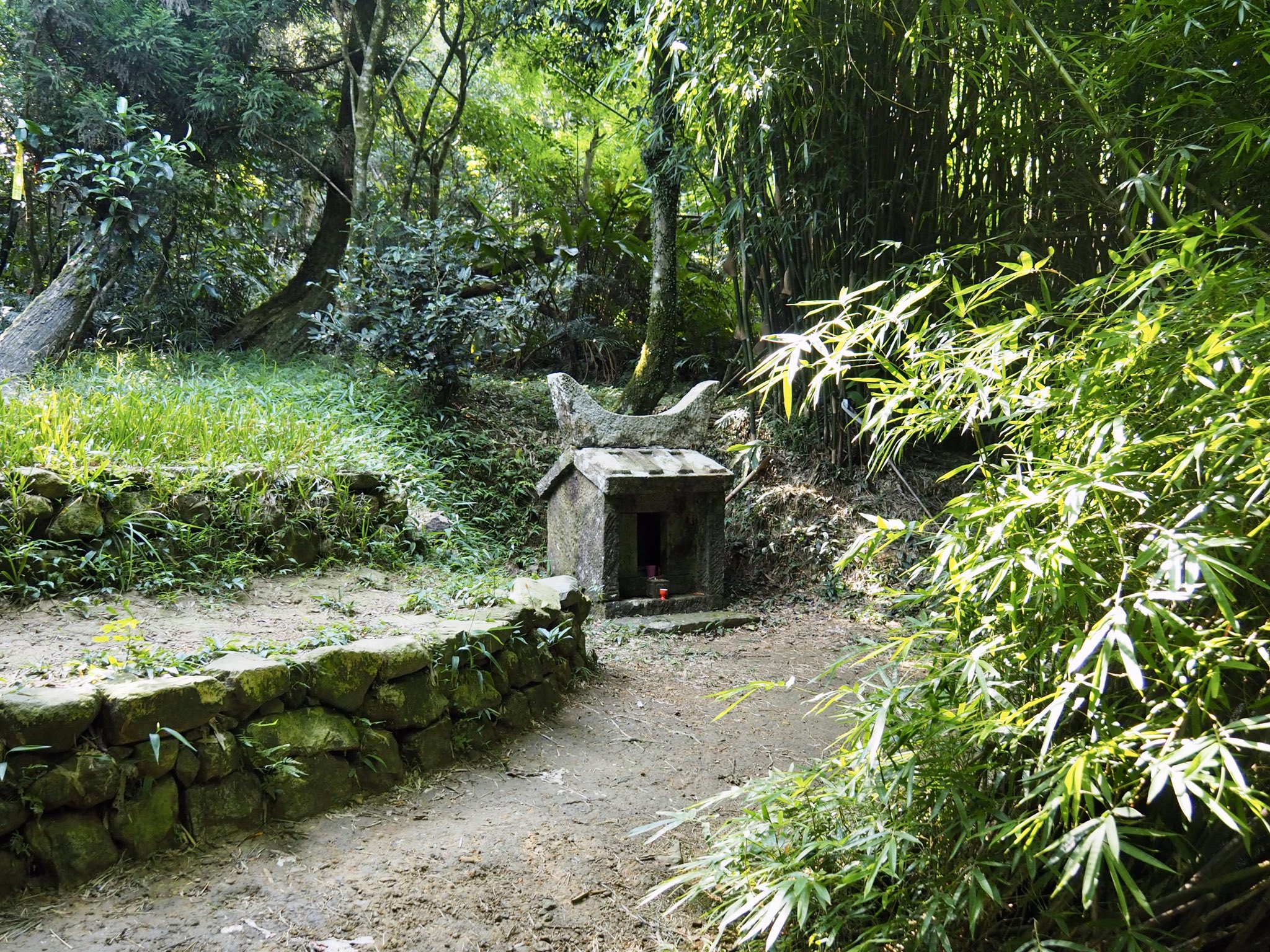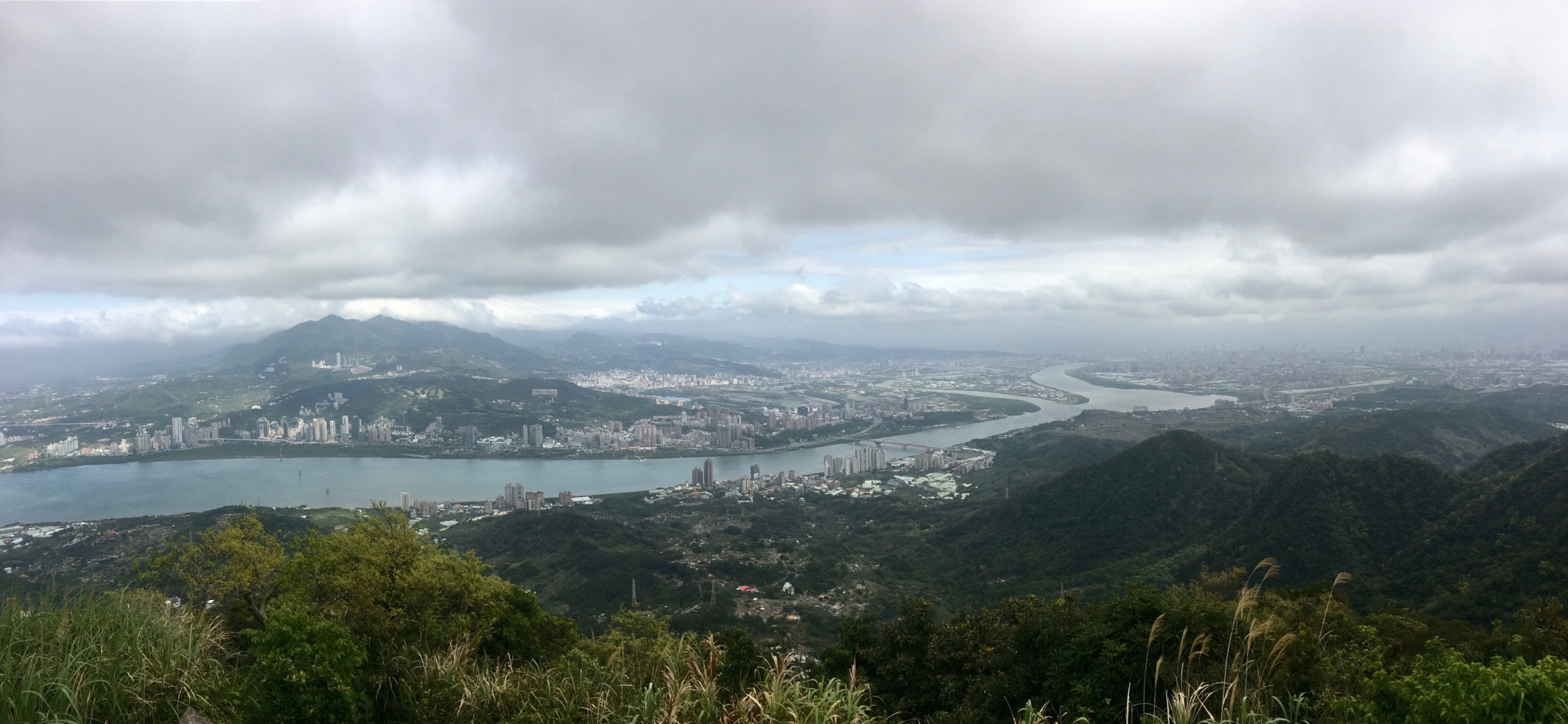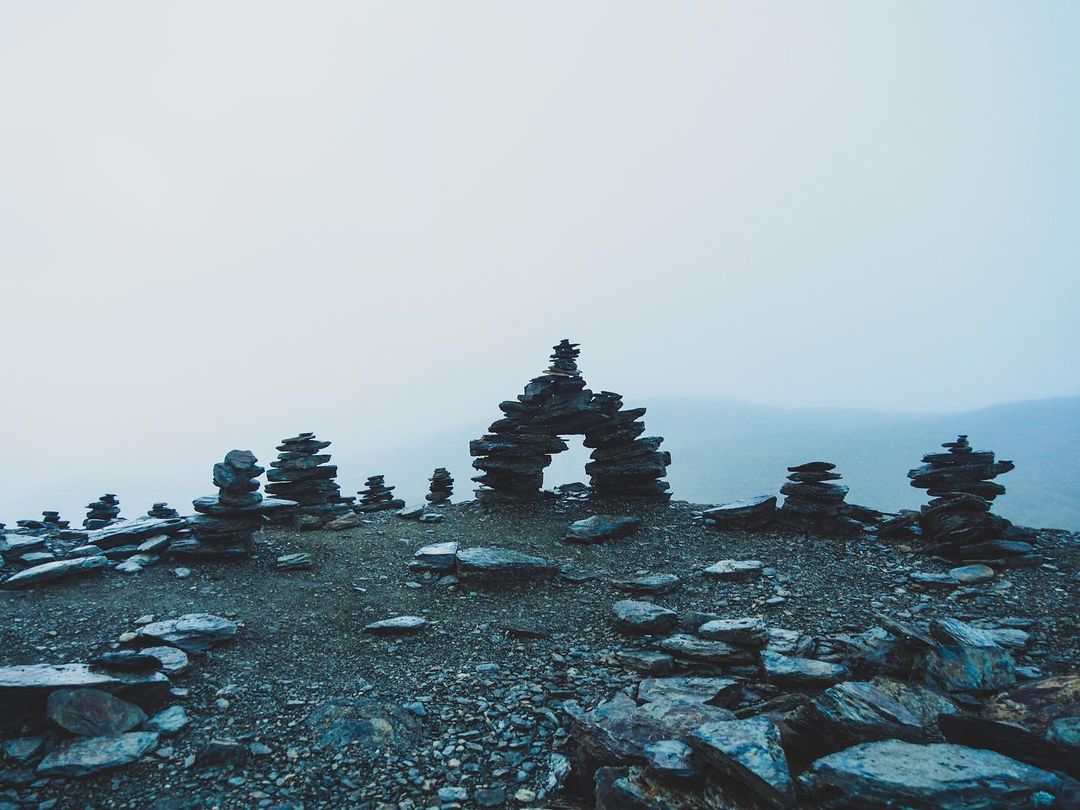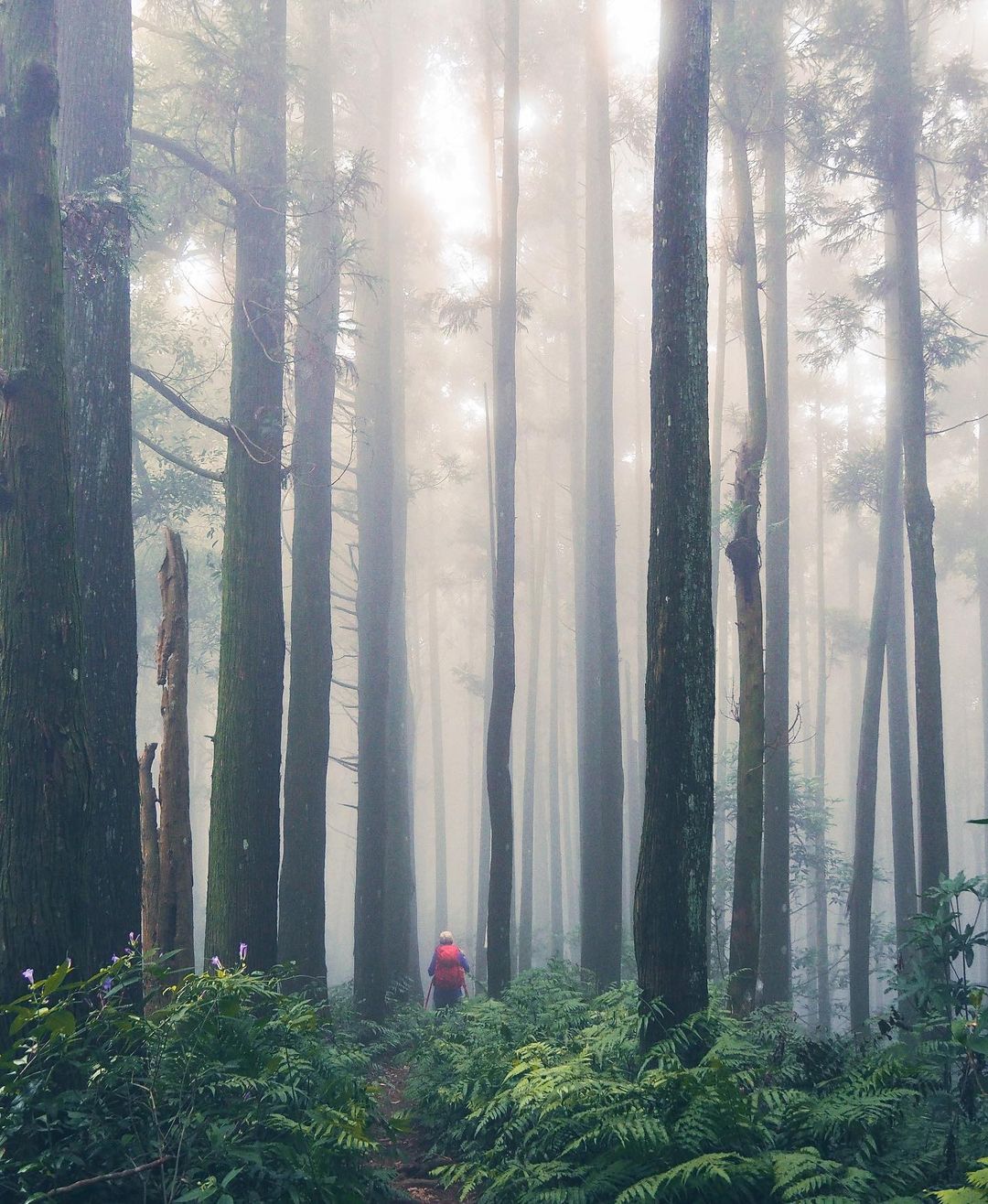To explain Taiwan’s natural beauty, and how it restores the mind, body and spirit, I was honored to speak with Taiwan Tales and Trails. In my opinion they are among the most insightful and brilliant nature writers in all of Asia.
Asia Art Tours: To start with a simple question, could you discuss how you came to love hiking in Taiwan?
Taiwan Trails and Tales: By the time I moved to Taiwan in 2016 I was already hiking regularly (as an antidote to Hong’s city living) and had seen enough of Taiwan’s mountains to know that I wanted to see more. One of the earlier trails that I walked was Huangdidian – a well known and spectacular ridge walk with scenery that my previous experience in Hong Kong or growing up as an English midlands village girl had not prepared me for.
At the start of the trail I remember wondering why you might need to wear gloves to go hiking in the summer, and by the end I was all pumped up on endorphins and ready to go again – this feeling has been driving me ever since. There’s always another place to discover. (For the uninitiated, the gloves are for protecting your hands as you grab hold of ropes, rocks and tree roots – when people here speak of going hiking they tend to say they ‘climb mountains’ and often that’s an accurate description.)
 Taiwan Trails and Tales on Huangdidian
Taiwan Trails and Tales on Huangdidian
Asia Art Tours: For you, what is the most meaningful trail you’ve hiked in Taiwan? And why it was so meaningful?
Taiwan Trails and Tales: That’s too hard! Can I cheat and say the Tamsui-Kavalan Trails? It’s not a single trail, but a network of historic paths connecting Wanhua and Yilan. The trails run for many kilometres and I walked the entirety of them over the course of 19 separate day hikes in 2020. Walking these trails was meaningful in many ways: the challenge it presented, the people I met, overcoming my own fears to walk them alone, the landscape and stories I encountered, and the more intimate, under the skin connection to the land that it left me with.
Aside from the Taipei Grand Hike (a route I covered in 2019), it was my first multi-part walk in Taiwan, and it was definitely the biggest challenge I had undertaken in terms of route finding and transportation. At the time when I walked it, parts of the southern and middle routes had not yet been signposted, and there was scant information available online from local hiking groups – as someone who needs to plan thoroughly prior to heading for the hills, this gave me a bit of a headache. I had to stitch together potential tracks from articles and blog posts written by locals.
Likewise, I set myself the goal of walking the whole route using only public transport so I could be sure that even a tourist could come here and make use of my blog to plan their trip, but since many parts of the route saw me starting or ending at remote spots, that meant some very early starts and familiarising myself with the schedules of the minibuses which ply bumpy country roads outside of the city. Being able to navigate these logistical obstacles gave me an immense sense of satisfaction and personal growth – I would have never dared do it alone when I first arrived in Taiwan.
Video produced by the New Taipei City Government on the Tamsui- Kavalan Trails
Beyond the practical difficulties, you develop a very different sense of place through walking in the landscape – one coloured by a patina of historic lives. Flat areas of land close to a stream and bamboo thickets reveal themselves to be old homesteads, walls in the undergrowth are the remnants of old terrace farms, circular depressions may be charcoal kilns, land god temples tell you where people stopped and rested and shared food, likewise holes drilled through rocks show where horses were tethered, slopes now cloaked in cedar trees would have been bald fifty-sixty years ago, modern place names betray historic land usage, and trailside funerary urns tell of immigrants who never made it back home. Somehow earning these layers of knowledge by walking the trails is far more meaningful than simply knowing the facts.
Multiple times over the course of my journey I was overwhelmed by the beauty of Taiwan and the generosity of the people I met. So many people tried to offer me a lift (on the final leg of the journey I had to accept one offer after the bus that should have come didn’t), people I met shared food and shared their stories of walking or living on these trails – open air and green space somehow being more conducive to conversation than city confines. But even solitary moments were often meaningful.
I remember sitting at Sanshuitan on a quiet weekday afternoon having my lunch at a spot where travellers have stopped to rest for literally hundreds of years, my feet in the water, watching the fish dart here and there, bird and insect song vibrating through the air, filling my hungry belly with noodles and letting the sun warm my back. I felt so grounded, so very present – just a person enjoying a rest on a journey like countless others had done before and will continue to do. I think this is something that’s particularly hard to feel as a ‘perpetual visitor’ to a place, that sense of a deeper connection to the land or the people, so whenever I catch a sliver of it, it’s something I cherish.
 Taiwan Trails and Tales on SanShuitan
Taiwan Trails and Tales on SanShuitan
Asia Art Tours: Could you share with us one of the most memorable ‘tales’ from your hikes?
Taiwan Trails and Tales: This is another tough question! There have been so many tale-worthy moments that I have experienced personally, and so many more that I stumbled across whilst researching parts of my writing. From a historical perspective some of the tales I’ve most enjoyed finding out have been origin stories of the numerous temples that litter the countryside.
They often occupy that liminal space between history and legend – like the Youying Gong shrine on the coast that was built to house a skull dragged up in a fisherman’s nets, or the land god temple rebuilt upon instructions received in a dream and with funds raised after that dream was shared with a village committee, or the ancient wooden idol that was believe lost in a flood but which turned up unharmed in the middle of the river. These tell you much about the waves of immigration to Taiwan as well as the daily concerns of the people who have lived here in times gone by.
 Example of a Tudi Gong shrine (No skull inside!)
Example of a Tudi Gong shrine (No skull inside!)
Personally there have been so many memorable tales that I wouldn’t know where to start, so perhaps I will share one which is exemplary of what it’s like to hike solo in Taiwan. It happened on the quieter dirt trails that encircle Mount Guanyin – the mountainous mass which rises from the west bank of Tamsui River. I’d been checking my map was startled by a man who came up behind me quite quickly and quietly. Evidently a regular visitor, he wanted to check that I knew where I was going, and offered to take me to a particularly good lookout spot where he and his friends often went to drink tea and chat.
Common sense would dictate that as a solo female hiker in an unfamiliar area I should politely turn down his offer and seek safety in numbers, but at that time I had been in Taiwan four years already and decided to trust my instinct that this man was genuine in his intentions. So I followed him for maybe ten minutes and we ended up at a spot that I wouldn’t have visited by myself – he poured me tea, his friends were there, we chatted about their mountain hiking experience in Taiwan and abroad and we enjoyed the view of Yangmingshan National Park rising from the Tamsui Estuary. I have lost count of the number of times I’ve had experiences like this here. (My partner – who is Taiwanese – insists that this is preferential treatment due to my status as a foreigner, and she’s probably true, but I can only tell my own story.)
 View from Guanyin Shan
View from Guanyin Shan
Asia Art Tours: From your experiences in Taiwan(especially during this pandemic), how have you come to understand mental health and therapy in relation to nature?
Taiwan Trails and Tales: I’m going to caveat my response by saying that I am no mental health professional, but I am someone who has lived through patches of rocky mental health at times, so can I speak from personal experience. I’ve long known that it’s essential for me to spend time outside in order to maintain an even footing. In good times getting out and reconnecting with nature brings a deep sense of joy and contentment, and during the bad it gets me out of my own head for a much needed break. Often times walking in Taiwan is a full body experience, your mind can’t be elsewhere because if it is you will almost certainly trip over something or walk into a spider web – in this sense I feel like walking is a form of active meditation, a way to truly inhabit your own body. When I am walking my mind quietens.
 Cairns built by unknown hikers on Qilai South Peak
Cairns built by unknown hikers on Qilai South Peak
During the recent lockdown I think I probably got off pretty lightly. I was fortunate that I didn’t have to worry about losing my job, and as a true introvert I found that being by myself a lot was just fine. But the stress adapting to a more computer based way of working still took a toll, and I found myself craving an alternative to the overstimulating online world. Luckily I live close to several trails that I could continue visiting during and felt immensely grateful for this. Walking the same area almost daily meant that I was able to take joy in the minute day to day changes that you would miss if you only visited once a week.
I had time to watch mushrooms erupt after rains, check on the progress of spiders in their webs, and notice which trees drew noisy clicks of birds every morning. It was restorative. My daily walks also brought me closer to others in a way that was hard to do during the pandemic. The same group (of mostly retirees) heads out every day to walk the trails and do a spot of tai-chi and tea drinking. The first week all we exchanged were nods of the head, then verbal greetings, then a few stopped to have a chat and others invited me to share their exercise space. After a month I was on first name terms with a few of them and felt happy to have been somewhat adopted by their little community. These were the only people I had face to face conversations with except for my partner for almost the whole level three lock-down.
 Gorgeous Mushrooms found along a hike
Gorgeous Mushrooms found along a hike
Asia Art Tours:Lastly, in this era of pandemics and climate collapse, have your experiences with Taiwan’s environment offered you insight into how humanity can better coexist with the natural world? Do we need to radically transform our relationship with and appreciation of the natural world for human beings to survive on this planet?
Taiwan Trails and Tales:
I’m something of a pessimist when it comes to this subject, even more so since coming to Taiwan where it’s evident that immediate profit and convenience tend to hold more sway than the slightly distant, abstracted goal of protecting our planet. We need to shift our perspective from seeing nature as little more than a resource, something that we can mine, use, take advantage of or deplete – it’s ‘value’ is there even if (particularly if) we do nothing to it.
I challenge anyone to stand in front of one of the many giant trees that you find in Taiwan’s old forests and observe it, consider the changes it has witnessed, consider how many generations of their own family that tree has existed for, how many generations it could preside over in the future and to still think that human affairs are more important than the life of these wild places.
 Towering ancient cedars found along a trail.
Towering ancient cedars found along a trail.
Similarly, I feel we need to stop seeing ourselves as separate, distinct from nature, although we build walls and roofs around us to create the illusion that we are somehow apart from the wild, we’re not at all. I would love to see more initiatives geared towards getting families (in Taiwan of course, but perhaps this is necessary all over the world), out of the comfort of air conditioned rooms and into places where they can connect with their feral selves and foster a greater interest in and understanding of the natural world.
I say families because whilst kids tend to be still half wild by nature, and therefore often posses an innate empathy for other wild things, their parents also need to be on board as advocates and instigators of change – this is not a burden we can just leave to those who will come after us. And Taiwanese people know more than many the devastating effects that can be wreaked by a toxic cocktail of poor land management and extreme weather conditions. It’s not just something that might happen in the future. It’s something we’re living with now.
To explore Taiwan’s Hiking, Nature and The Deeper Meanings found in its woods, you can check out Taiwan Trails and Tales here: taiwantrailsandtales.wordpress.com
You can also support their cause, and hiking in Taiwan through donations. Their donation links are below:
https://ko-fi.com/taiwan_trails_and_tales
https://www.buymeacoffee.com/taiwantrails
All images (unless otherwise noted) are courtesy of Taiwan Trails and Tales. Do not share or republish without explicit permission.
